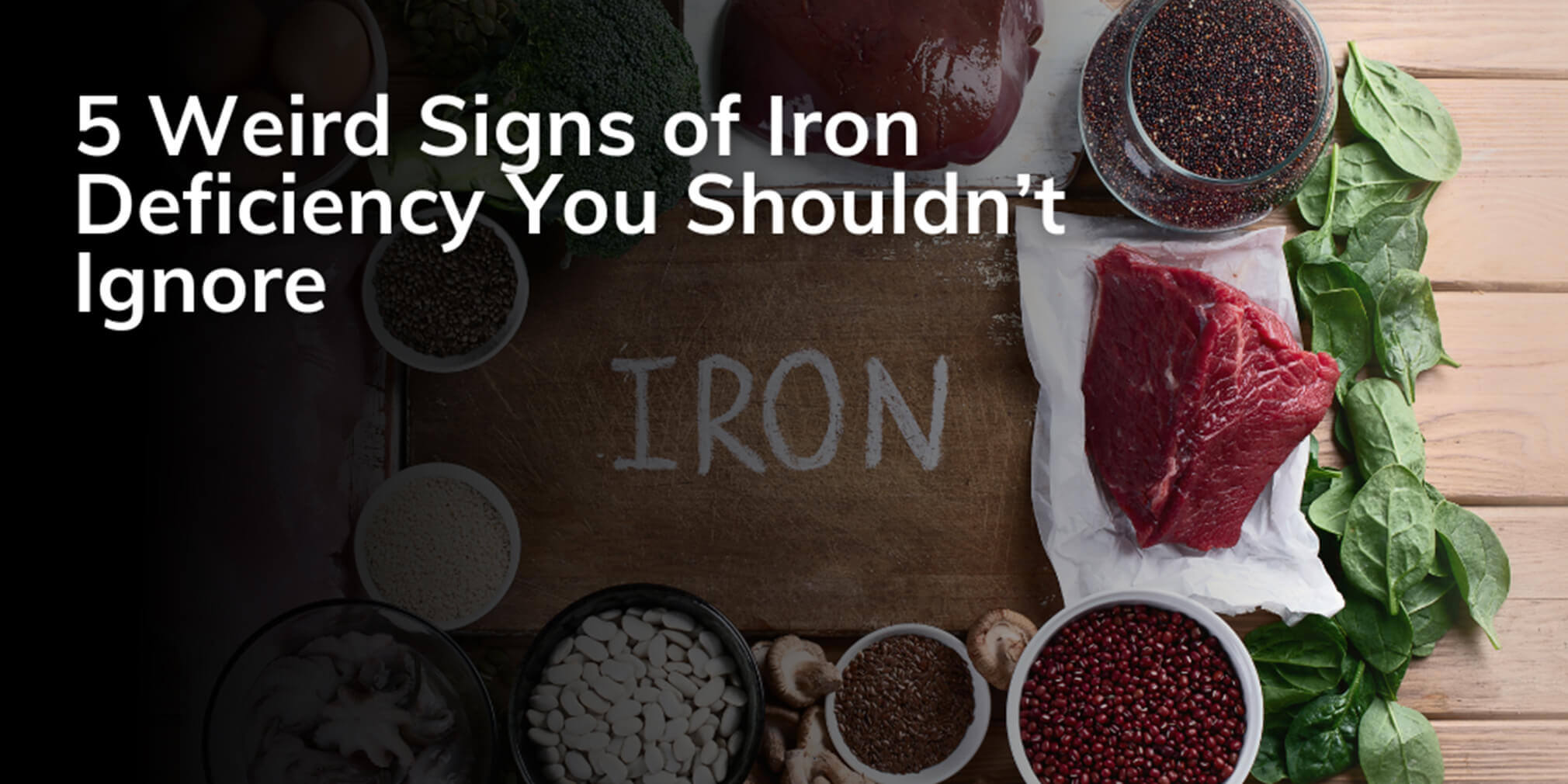
5 Weird Signs of Iron Deficiency You Shouldn’t Ignore
Those who feel constantly tired, clouded, or experience shortness of breath in an unusual manner are facing more than just a busy schedule and stress. They are facing iron deficiency.
Iron deficiency is a common condition worldwide. It does not just affect those with problematic diets. Women of reproductive age, vegetarians, athletes, and those with digestive conditions are all at a higher risk of developing it.
Then again, these signs do not pop up all of a sudden. They creep in slowly and often go undiagnosed until they start affecting people. Those who feel constantly drained, dizzy, or are experiencing shortness of breath should watch out for the 5 weird signs of iron deficiency.
Iron Matters – Here are the reasons why
Iron is a vital mineral that helps the human body create hemoglobin. It is the main protein in red blood cells that helps transport oxygen. A lack of hemoglobin means cells cannot get the oxygen they need. That is why low iron levels often result in low energy levels. The human body also needs to do the following:
- Supporting a healthy immune system.
- Maintaining focus and mental clarity.
- Maintaining strong skin, hair, and nails.
- Prevention of breathlessness, cold extremities, and dizziness.
Signs of Iron Deficiency: No one should ignore
The phenomenon does not always mean anemia. People can have low iron levels and feel the symptoms of iron deficiency. They should look out for the following:
- Unexplainable fatigue or weakness.
- Paleness in the inner eyelids and the skin.
- Dizziness (lightheadedness).
- Cold hands and feet.
- Brittle nails.
- Hair thinning.
- Shortness of breath when climbing stairs.
- Cravings for ice or unusual textures (known as pica).
How to check iron deficiency at home? If people or their loved ones are experiencing any of the above symptoms, it is advisable to consult a physician.
Who is at Risk of Iron Deficiency?
The following groups are at risk of iron deficiency due to biological, lifestyle-based, or medical factors:
- Women during menstruation and pregnancy.
- Children and teens are affected by growth spurts and poor nutrition.
- Vegetarians or vegans may experience low iron intake due to excessive consumption of a non-meat-based diet.
- The elderly.
- People suffering from chronic illnesses (cancer, kidney disease, thyroid problems).
- Frequent blood donors.
- Long-distance runners (due to foot-strike hemolysis).
- Hidden gastrointestinal (GI) bleeding (Due to ulcers, colon polyps, etc.).
- Poor dietary patterns.
What are the Common Causes of Iron Deficiency?
Here are some of the most common causes of iron deficiency:
Menstruation
Regular blood loss from periods is the leading cause of iron deficiency in women. This is taken into consideration, especially if women endure heavy periods.
A diet lacking iron
Plant-based diets lack the necessary levels of absorbable iron. The human body slowly absorbs non-heme iron (derived from plants) compared to heme iron (derived from meat). Hence, vegans and vegetarians are more prone to iron deficiency.
The long-term effects of iron deficiency resulting from a poor diet can be severe and may require extreme measures to treat the deficiency.
Pregnancy in Women
Women during pregnancy require more iron to support increased blood volume and the fetus’s development.
Digestive Conditions
Celiac disease, Crohn’s disease, or low stomach acid can impair absorption in the human body, even if the iron intake is sufficient.
Diagnosing Iron Deficiency
Iron deficiency cannot be confirmed solely by a person feeling tired. It requires blood to be tested properly for anemia and iron levels. Doctors often recommend a series of lab tests (or a proper iron deficiency test) to determine whether iron levels are low or if the condition has progressed to anemia.
Here are some tests that physicians typically order from their patients to assess iron deficiency and its associated symptoms.
Complete Blood Count (CBC)
This is usually the first test for diagnosing iron deficiency. It measures hemoglobin levels, hematocrit, and the size of red blood cells. Low values do indicate anemia, but CBC alone is unable to determine the depletion of iron levels in the body.
Serum Ferritin
Ferritin reflects the amount of iron stored in the body. Levels below 45 ng/mL reveal iron deficiency even if the hemoglobin levels are within the normal range. The test is a reliable indicator of low iron levels in the human body.
Serum Iron, TIBC, and Transferrin Saturation
Here are some tests that are under this category:
- Serum Iron: This test measures the amount of iron circulating in the blood at the time the test was taken.
- Total Iron-Binding Capacity (TIBC): This test measures the amount of iron the blood can carry, especially when more iron is available.
- Transferrin Saturation (TSAT): This shows the percentage of transferrin (the protein used for transporting iron). It itself is loaded with iron.
Combining the outcomes of these tests provides a comprehensive picture of iron metabolism. This helps doctors understand the difference between iron deficiency, a chronic condition, and other causes that indicate anemia.
Effective ways of treating Iron Deficiency
Thankfully, there are both natural and medically recommended ways to help correct iron levels in men, women, children, and older people. They are as follows:
Consuming an iron-rich diet
Consuming foods that are rich in heme iron (easy to absorb) helps the body absorb more iron. These food items comprise:
- Red meat (beef, lamb).
- Poultry (chicken, turkey).
- Liver and other edible organs.
- Shellfish (clams, oysters).
Here are non-heme sources of iron that do have the mineral in them, but only allow the body to absorb iron slowly:
- Legumes (chickpeas and lentils).
- Leafy Greens (Kale, Spinach).
- Fortified cereals and grains.
- Pumpkin seeds, quinoa, and tofu.
Pairing iron-rich foods and meals with vitamin C ( such as citrus fruits or tomatoes) helps enhance absorption of iron in the human body.
Usage of Iron Supplements
Iron pills or capsules are commonly recommended for raising iron levels when necessary. They should be taken with medical advice, as excessive levels of iron can lead to constipation, organ damage, and vomiting.
Intravenous (IV) Iron Therapy
Iron infusions via intravenous drips (IV) are recommended when there is a moderate to severe deficiency of that mineral. It is often administered under medical supervision at hospitals and other proper medical facilities.
Addressing Underlying Conditions
If iron deficiency is caused by menstrual cycles, gastrointestinal bleeding, or a chronic condition, it is advisable to manage these conditions with proper medications to ensure long-term improvement.
Over to You
Iron deficiency has symptoms that often hide in plain sight. A proper diet helps alleviate half of those symptoms. However, if the problem worsens, it is wise to consult a physician immediately. Any medication or supplement should be taken on their recommendation.
